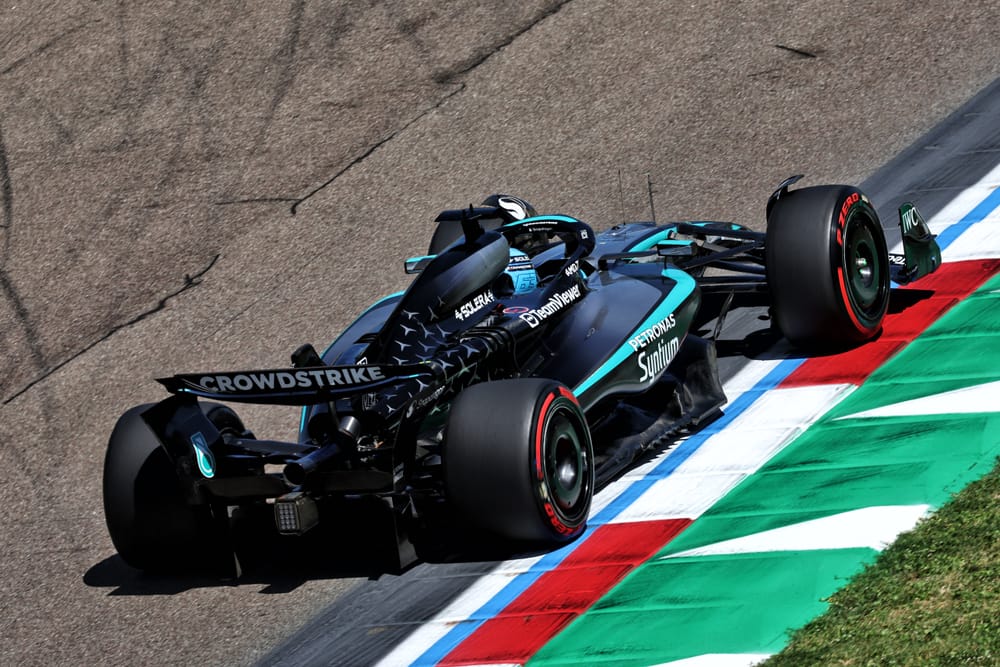Mercedes is to reintroduce the latest version of its rear suspension for Formula 1's Canadian Grand Prix this weekend – having parked it for the last two races.
The team had originally brought the tweaked suspension to the Emilia Romagna Grand Prix last month as part of a series of upgrades, but it was dropped after that weekend amid some uncertainty about its performance impact.
With George Russell and Kimi Antonelli having had challenging weekends at Imola as they lacked the pace shown in previous races, the team felt it best to revert to its original suspension for the following race in Monaco where it needed more of a well-known baseline.
As work continued back at its factory on better understanding the new design, Mercedes also stayed with the same original configuration for the last race in Spain a fortnight ago.
But with it now having conducted a thorough analysis of the new suspension layout, it has more faith that it can unlock gains – so will run with it in Montreal this weekend.
Speaking after the Spanish Grand Prix, where further upgrade changes had shown some signs of promise, Antonelli talked about some optimism of performance improvements that could come.
"The car felt pretty good - it was connected," he said. "So I think we did feel something, and now we'll see also with the rear suspension.
"We've done some good learning, and hopefully now we can get a benefit from it."
The new suspension features a lower inner pick-up point for the top wishbone forward leg. The change appears to have lowered the pick-up point by around 25mm/30mm.

As well as the visual changes, there will also likely have been further tweaks to the inner mounts of the wishbones to allow it to achieve this change of location.
The focus of the new design will be to improve both the mechanical and aero platform of the W16, and with it deliver gains in terms of tyre management.
Mercedes has been chasing answers for why the strong form it enjoyed in the early phases of the season has fallen away – as it has suffered a repeat of the tyre temperature issues that marred its previous cars.
From being so strong up until the Bahrain Grand Prix in mid-April, its pace relative to the others began falling away from Miami at the start of May – even though Russell took a podium finish there.
Since then it has not taken a top three finish, but Russell's fourth place in the Spanish GP did suggest that upgrades had helped it turn the corner.
After digging into whether the slump in form was the result of warmer races or upgrades not delivering the progress hoped for, Mercedes boss Toto Wolff said ahead of the Canadian GP that the aim was to get things back on a more even keel.
"We showed an improved performance in Barcelona and that is something for us to build on," he said.
"However, we know we need to be more consistent, and continue to make progress with the W16, if we are to rediscover some of our form from earlier in the season."
Gary Anderson says...
Mercedes is using the new rear suspension because Montreal is all about braking, turn-in confidence and traction.
The drivers should get more stable braking because of the increased anti-lift, but not turn-in confidence because they don’t have increased pro-squat or traction for the same reason.
This means the car could actually feel worse to the drivers, because it will be changing rear ride height just at that critical turn-in point.
We went through all of that in 1994 in Montreal with Jordan. We had quite a lot of anti-lift adjustment on our car then. We tested it with Eddie Irvine, who at that time was one of the last to hit the brake pedal.



